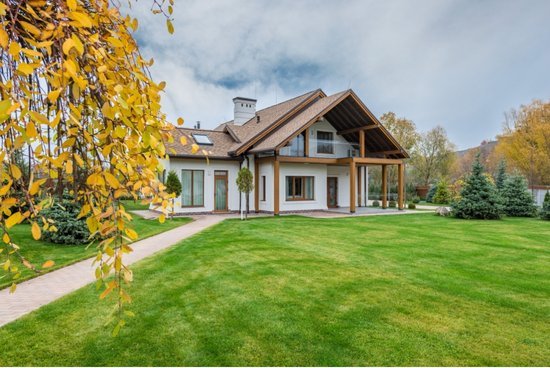Learn the causes of chimney repairs and keep your home and family safe today!
Moisture Infiltration: The Silent Chimney Killer
Moisture infiltration is the number one cause of chimney damage. When water gets in through the cracks in the chimney crown or damaged mortar joints, it can cause a chain reaction that can compromise the entire masonry chimney. A cracked chimney crown allows rain and snow to get into the masonry chimney, which in turn can cause the mortar and chimney bricks to deteriorate. Over time, moisture weakens the structure and causes brick spalling, where the bricks start to crumble and flake. If left untreated, this can cost you a lot of time. Replacing damaged bricks or repointing with new mortar is key to getting the chimney strong again. Water damage can also compromise the flue and create leaks that allow toxic gases like carbon monoxide to get into your home. To prevent these problems, install a quality chimney cap to protect the chimney from rain and moisture and keep it sealed with water-repellent materials.
Creosote Buildup: A Fire Hazard You Can’t Ignore
Creosote buildup is a wood-burning fireplace hazard. This highly flammable substance forms as a byproduct of combustion, sticks to the chimney walls and coats the inside of the chimney flue. If not removed, creosote can ignite and cause chimney fires, which are a big safety hazard. Creosote buildup not only puts your home at risk but also damages the chimney and requires repairs. A chimney sweep should clean the chimney regularly, especially in wood-burning fireplaces, to prevent excessive buildup and keep the chimney in great shape. In addition to chimney sweeps, having a chimney inspection can detect any cracks or deterioration in brick chimney caused by the creosote’s corrosive effects. Regular inspections will ensure that any damage, such as hairline cracks in the chimney bricks or mortar, is addressed before it becomes a big problem.
Aging Mortar and Cracked Joints: How They Cause Chimney Damage
The mortar joints that hold the chimney bricks together are the backbone of the chimney. However, as mortar ages, it becomes brittle and prone to cracking. When hairline cracks appear in the mortar, moisture can get in and cause more damage. If left untreated, these cracks can spread and allow rainwater to get into the chimney, causing the bricks to deteriorate. Cracked mortar can cause spalling bricks where the surface of the chimney bricks starts to flake off and crumble. This weakens the chimney structure and makes it more prone to damage. Repointing bricks or replacing old mortar with new mortar can keep the chimney intact and prevent structural damage. In some cases, small cracks can be repaired with a pre-mixed cement patch, but larger cracks may require replacing damaged bricks or even the whole chimney. A professional chimney repair service will use a pointing trowel or putty knife to apply mortar or replace bricks as needed.
Chimney Cap Failure: Protect Your Chimney from the Elements
The chimney cap is part of the chimney system and is designed to protect the flue and prevent water damage. A damaged or missing chimney cap leaves the chimney open to moisture, which can cause severe water damage to the chimney crown and bricks. Over time, rainwater can weaken the mortar and cause cracks and damaged bricks. If the chimney repair is left unaddressed, this damage can get worse and cost you a lot of money. Installing a new concrete cap or a proper chimney cap will prevent further damage by sealing the chimney from rain, debris, and animals that can cause blockages. A chimney cap will also prevent leaks that can allow toxic gases to seep back into your home, which is a serious health hazard. To ensure a chimney cap works properly, it should be installed to the correct outside dimensions and securely positioned.
Poor Construction: The Hidden Cause of Chimney Problems
Poor construction is one of the main causes of chimney problems. Chimneys built with subpar materials or poor workmanship can be prone to issues such as inadequate sealing, poor mortar application, and structural instability. This can cause chimney damage, such as spalling bricks, large cracks, or damaged roof mortar joints. Poorly constructed chimneys may not have proper flashing, and rain can get in and cause more damage to the bricks. When construction is done improperly, you’ll be facing costly repairs down the road.
In some cases, the chimney may need to be completely rebuilt. Regular inspections by a professional chimney sweep can catch these issues early and provide timely repairs to prevent more expensive repairs and unnecessary structural damage. If your chimney is poorly constructed, it may need replacement bricks or repairs to fix structural flaws and make it safe and functional.
The Cost of Neglect: Why Chimney Inspections Matter
Neglecting regular chimney maintenance is one of the most common reasons for major chimney repairs. Over time, small issues with brick chimney repair like small cracks in the bricks or excess mortar in the joints can become bigger problems. Without regular chimney inspections, these small issues go unnoticed and can cause spalling bricks, damaged flues, and even chimney fires. Regular inspections can identify areas of concern early, and minor repairs can prevent major issues. Replacing a chimney crown or repairing damaged bricks can be costly, so investing in regular inspections and chimney sweeps can prevent costly repairs down the line. Also, regular cleaning of the chimney flue can prevent creosote buildup and keep your chimney running at its best.
Chimney Fires: A Risk You Can’t Ignore
Chimney fires are one of the biggest risks of an unmaintained chimney. These fires occur when creosote buildup ignites, and the flames spread through the flue and into the rest of the house. Not only can chimney fires cause damage to the chimney itself, but the flue can also crack and require costly chimney repairs. After a chimney fire, you need to have the chimney inspected for structural damage, including cracks in the chimney bricks, mortar, and flue liner. The chimney may need to be repaired or replaced entirely, depending on the extent of the damage. Chimney fires can also release toxic gases, so you need to have the chimney repaired ASAP. Regular maintenance and cleaning can prevent chimney fires and keep your house and chimney safe to use.
Save Your Home: Act Before Chimney Damage is Irreversible
Knowing the causes of chimney damage and acting early can prevent costly and dangerous repairs. From moisture infiltration to creosote buildup and deteriorating mortar joints, these can become major problems if left unaddressed. Installing a chimney cap, repairing cracks in the mortar, and ensuring proper water sealing are all important steps in maintaining your chimney’s integrity. Act early with regular inspections, cleaning, and minor repairs, and you’ll save yourself from costly repairs down the line. Your chimney will be safe to use for years to come. Don’t wait for structural damage to ruin your home – protect your chimney and your family with proper care and attention.
Need a Chimney Inspection? Call GMT Home Services Today!
If you’re concerned about your chimney, give us a call before issues become major. At GMT Home Services, we offer full chimney inspections and repairs to keep your chimney safe and running. From minor repairs to full chimney rebuilds, we can do it all. Schedule an inspection today and sleep easy, knowing your chimney is in good shape for the winter ahead. Don’t gamble with your home’s safety – let GMT Home Services keep your chimney in top shape.


